
Allan Ramsay was a Scottish poet, playwright, publisher, librarian and impresario of early Enlightenment Edinburgh. Ramsay's influence extended to England, foreshadowing the reaction that followed the publication of Percy's Reliques. He was on close terms with the leading men of letters in Scotland and England. He corresponded with William Hamilton of Bangour, William Somervile, John Gay and Alexander Pope.

The Hunterian is a complex of museums located in and operated by the University of Glasgow in Glasgow, Scotland. It is the oldest museum in Scotland. It covers the Hunterian Museum, the Hunterian Art Gallery, the Mackintosh House, the Zoology Museum and the Anatomy Museum, which are all located in various buildings on the main campus of the university in the west end of Glasgow.
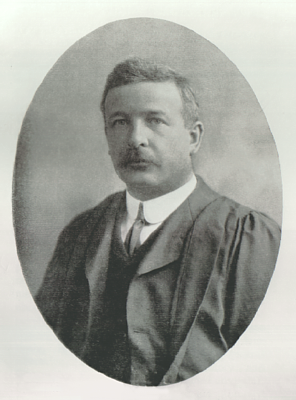
William John Watson FRSE LLD was a toponymist, one of the greatest Scottish scholars of the 20th century, and was the first scholar to place the study of Scottish place names on a firm linguistic basis.
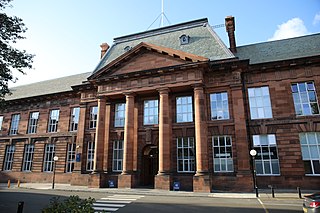
Edinburgh College of Art (ECA) is one of eleven schools in the College of Arts, Humanities and Social Sciences at the University of Edinburgh. Tracing its history back to 1760, it provides higher education in art and design, architecture, history of art, and music disciplines for over three thousand students and is at the forefront of research and research-led teaching in the creative arts, humanities, and creative technologies. ECA comprises five subject areas: School of Art, Reid School of Music, School of Design, School of History of Art, and Edinburgh School of Architecture & Landscape Architecture (ESALA). ECA is mainly located in the Old Town of Edinburgh, overlooking the Grassmarket; the Lauriston Place campus is located in the University of Edinburgh's Central Area Campus, not far from George Square.

New College is a historic building at the University of Edinburgh which houses the university's School of Divinity. It is one of the largest and most renowned centres for studies in Theology and Religious Studies in the United Kingdom. Students in M.A., M.Th. and Ph.D. degree programmes come from over 30 countries, and are taught by almost 40 full-time members of the academic staff. New College is situated on The Mound in the north of Edinburgh's Old Town.

David BryceFRSE FRIBA RSA was a Scottish architect.
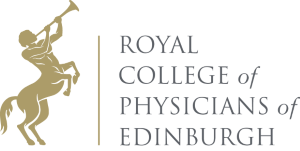
The Royal College of Physicians of Edinburgh (RCPE) is a medical royal college in Scotland. It is one of three organisations that sets the specialty training standards for physicians in the United Kingdom. It was established by Royal charter in 1681. The college has over 14,000 fellows and members worldwide.

Charlotte Square is a garden square in Edinburgh, Scotland, part of the New Town, designated a UNESCO World Heritage Site. The square is located at the west end of George Street and was intended to mirror St. Andrew Square in the east. The gardens, one of the collection of New Town Gardens, are private and not publicly accessible.
Gerard Baldwin Brown, FBA was a British art historian.
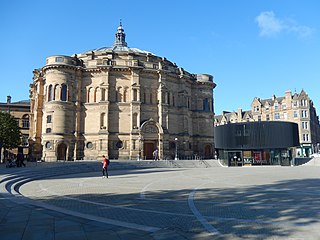
McEwan Hall is the graduation hall of the University of Edinburgh, in Edinburgh, Scotland. Designed by architect Sir Robert Rowand Anderson, it was funded by philanthropist William McEwan at a total cost of £115,000. Completed in 1897, McEwan Hall today is a category A listed building.

James Paterson PRSW RSA RWS, was a Scottish landscape and portrait painter associated with The Glasgow Boys movement of artists. He is best known for his landscape paintings of Dumfriesshire, where he lived, at Moniaive from 1885 to 1905.

The Brotherton Library is a 1936 Grade II listed Neoclassical building with some art deco fittings, located on the main campus of the University of Leeds. It was designed by the firm of Lanchester & Lodge, and is named after Edward Brotherton, 1st Baron Brotherton, who in 1927 donated £100,000 to the university as funding for its first purpose-built library.
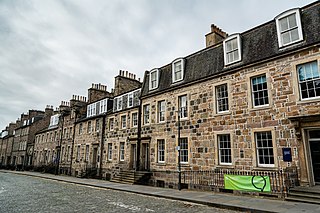
George Square is a city square in Edinburgh, Scotland. It is in the south of the city centre, adjacent to the Meadows. It was laid out in 1766 outside the overcrowded Old Town, and was a popular residential area for Edinburgh's better-off citizens. In the 1960s, much of the square was redeveloped by the University of Edinburgh, although the Cockburn Association and the Georgian Group of Edinburgh protested. Most but not all buildings on the square now belong to the university. Principal buildings include the Gordon Aikman Lecture Theatre, Edinburgh University Library, 40 George Square and Appleton Tower.
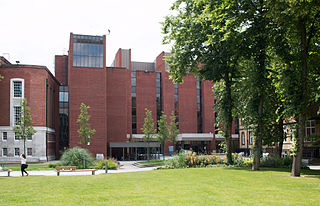
The University of Manchester Library is the library system and information service of the University of Manchester. The main library is on the Oxford Road campus of the university, with its entrance on Burlington Street. There are also ten other library sites, eight spread out across the university's campus, plus The John Rylands Library on Deansgate and the Ahmed Iqbal Ullah Race Relations Resource Centre situated inside Manchester Central Library.
Edinburgh University Women's Union was a students' union for women at the University of Edinburgh in Edinburgh, Scotland. The union became the Chambers Street Union before accepting the admission of men to membership in 1971, ahead of merging into the new Edinburgh University Students' Association in 1973.
George Stuart FRSE LLD was an 18th-century Scottish classicist. He was joint founder of the Royal Society of Edinburgh in 1783.
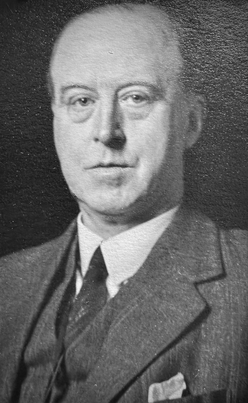
Robert William Johnstone CBE, FRCSEd, FRSE, FRCOG, was a Scottish obstetrician and gynaecologist. For some 20 years he was Professor of Midwifery and Gynaecology at the University of Edinburgh. He was a founding Fellow and subsequently vice-president of the Royal College of Obstetricians and Gynaecologists. He served as president of the Royal College of Surgeons of Edinburgh from 1943 to 1945.
Extramural medical education in Edinburgh began over 200 years before the university medical faculty was founded in 1726 and extramural teaching continued thereafter for a further 200 years. Extramural is academic education which is conducted outside a university. In the early 16th century it was under the auspices of the Incorporation of Surgeons of Edinburgh (RCSEd) and continued after the Faculty of Medicine was established by the University of Edinburgh in 1726. Throughout the late 18th and 19th centuries the demand for extramural medical teaching increased as Edinburgh's reputation as a centre for medical education grew. Instruction was carried out by individual teachers, by groups of teachers and, by the end of the 19th century, by private medical schools in the city. Together these comprised the Edinburgh Extramural School of Medicine. From 1896 many of the schools were incorporated into the Medical School of the Royal Colleges of Edinburgh under the aegis of the RCSEd and the Royal College of Physicians of Edinburgh (RCPE) and based at Surgeons' Hall. Extramural undergraduate medical education in Edinburgh stopped in 1948 with the closure of the Royal Colleges' Medical School following the Goodenough Report which recommended that all undergraduate medical education in the UK should be carried out by universities.
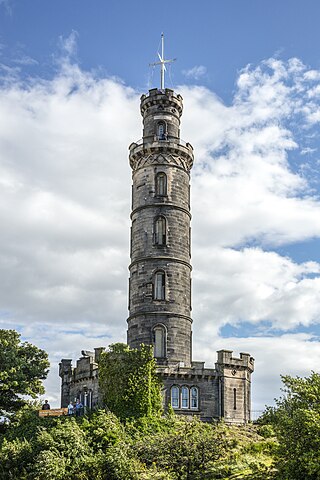
Robert Burn (1752–1815) was a Scottish architect. He was father to the architect William Burn.
The Forbes Chair of English Language is a chair at the University of Edinburgh. It is one of a number of chairs founded in the 1940s following a bequest by East India mechant and Edinburgh alumnus Daniel Mackintosh Forbes. Its original title was the Forbes Chair of English Language and General Linguistics, but with the creation of a separate chair of general linguistics in the 1960s the latter part of the title was dropped, incumbent Angus McIntosh continuing in the role.























